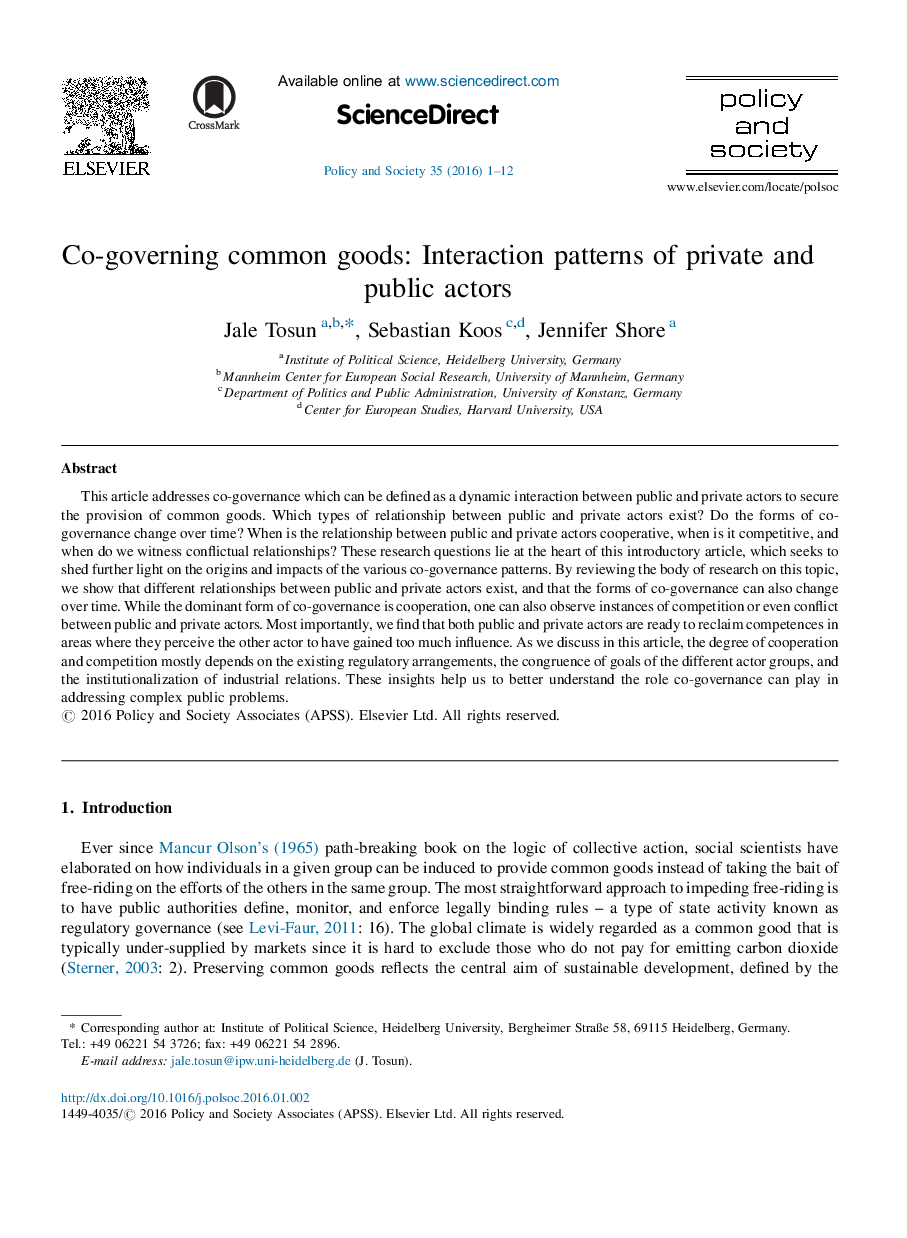| Article ID | Journal | Published Year | Pages | File Type |
|---|---|---|---|---|
| 5118403 | Policy and Society | 2016 | 12 Pages |
Abstract
This article addresses co-governance which can be defined as a dynamic interaction between public and private actors to secure the provision of common goods. Which types of relationship between public and private actors exist? Do the forms of co-governance change over time? When is the relationship between public and private actors cooperative, when is it competitive, and when do we witness conflictual relationships? These research questions lie at the heart of this introductory article, which seeks to shed further light on the origins and impacts of the various co-governance patterns. By reviewing the body of research on this topic, we show that different relationships between public and private actors exist, and that the forms of co-governance can also change over time. While the dominant form of co-governance is cooperation, one can also observe instances of competition or even conflict between public and private actors. Most importantly, we find that both public and private actors are ready to reclaim competences in areas where they perceive the other actor to have gained too much influence. As we discuss in this article, the degree of cooperation and competition mostly depends on the existing regulatory arrangements, the congruence of goals of the different actor groups, and the institutionalization of industrial relations. These insights help us to better understand the role co-governance can play in addressing complex public problems.
Related Topics
Social Sciences and Humanities
Social Sciences
Geography, Planning and Development
Authors
Jale Tosun, Sebastian Koos, Jennifer Shore,
